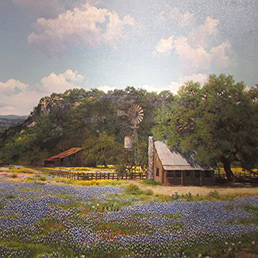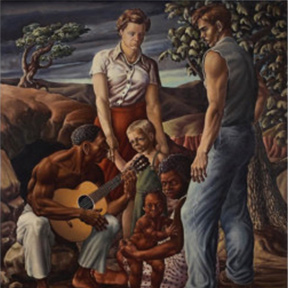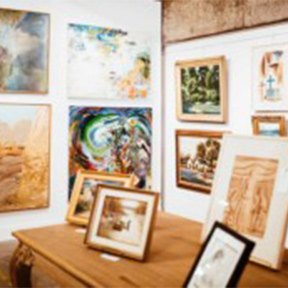- (214) 720-4044
- info@daviddike.com
- Mon - Fri: 10 am - 5 pm
Grenet, Edward
Edward Grenet
Genre and portrait painter Louis Edward Grenet, 1856-1922, was born in San Antonio. His merchant father’s import business near the Alamo, may have enhanced the young future artist’s awareness of the world, for he would spend much of his life in Europe.
In 1878, he studied in New York City at the National Academy of Design and Art Students League, returning to San Antonio in 1879, where he established a studio until 1885. Grenet’s painting of artist John Conrad Beckmann’s portrait, in the early 1880s, is thought to have encouraged that young artist in his career as a portrait painter.
Traveling to Paris in 1885, Grenet studied at the Ecole des Beaux-Arts with Alexandre Cabanel, and the Academic Julian, with Tony Robert-Fleury and William-Adolphe Bouguereau.
One of Grenet’s major awards was his first prize in the Paris Salon of 1909 for a portrait of a woman, “Mariola,” though he was also the winner of several medals in exhibitions in London and provincial cities like Nantes and Rennes in France. While living in the Paris suburb of Levallois-Perret, Grenet shipped four paintings to the 1893 World’s Columbian Exposition, Chicago, that have since been lost. They were titled “Evening Harmony,” “Grandmother’s Return,” “Forgotten” and “Portrait Study.”
About 1919, not long before his death in Paris, Grenet painted, in that city, the portrait of General John J. Pershing, Commander of the American Expeditionary Forces in France during World War I. Grenet’s work is in the collection of the San Antonio Museum Association.
Over the years, Grenet’s work has appeared in exhibitions at the Witte Museum, in San Antonio, including the Yanaguana Society Exhibition of Old San Antonio Paintings (1933); Centennial Exhibition of Early San Antonio Paintings (1936); The Early Scene: San Antonio (1964); and Art for History’s Sake: The Texas Collection of the Witte Museum (1993).
Edward Grenet’s work was also exhibited at the Art Institute of Chicago (1894-1895, 1907); Painting in Texas: The Nineteenth Century, Amon Carter Museum of Western Art, Fort Worth (1967); and Texas Seen/Texas Made, San Antonio Museum of Art (1986).





